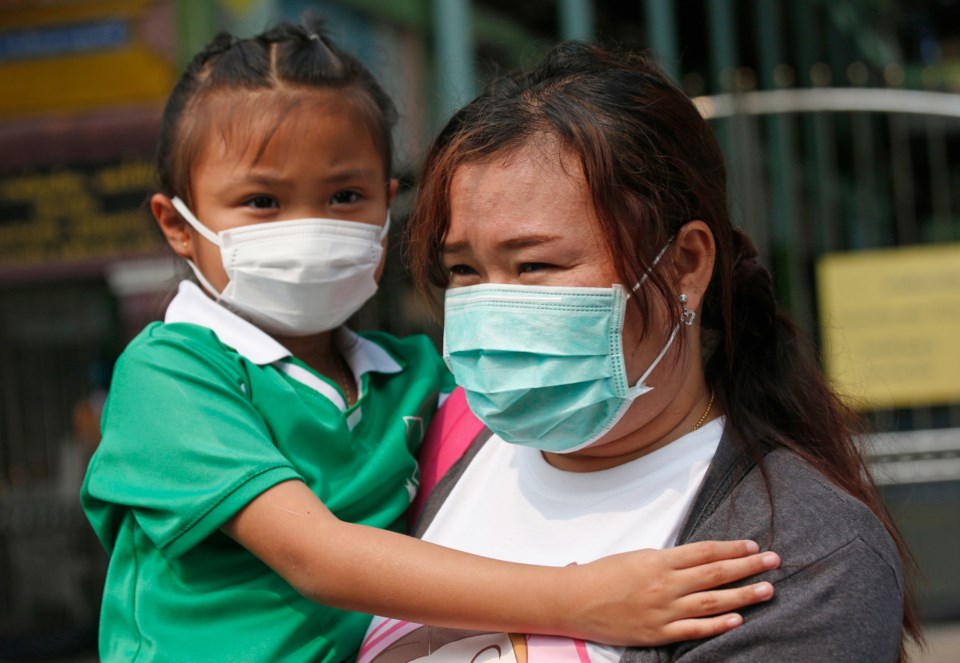The World Health Organization recently released a report on the top 10 threats to health in 2019. Strikingly, several are related to global ecological change, marking perhaps a turning point in the recognition of the health implications of the rapid and massive ecological changes we are causing.
The first threat is air pollution and climate change. WHO reports that nine out of 10 people around the world breathe polluted air every day, causing around seven million deaths annually, mainly from heart and lung diseases and cancer. About half the deaths are due to outdoor air pollution, mainly emissions from industry, transport and agriculture. Indoor air pollution from heating and cooking with biomass fuels is an important factor in the other half of the deaths.
Troublingly, about 90 per cent of those deaths are in middle- and low-income countries, according to the 2017 report of the Lancet Commission on Pollution and Health. This is a pattern seen in most of the other major health threats facing the world today.
The major source of air pollution is the burning of fossil fuels, which of course is also the major cause of climate change. While WHO estimates that climate change will contribute to about 250,000 additional deaths each year between 2030 and 2050, many see that as a considerable underestimate. Emerging evidence suggests the impact of climate change on health and society will be more serious and more rapid than we used to think.
The second major health threat is non-communicable or chronic disease — heart disease, cancer, lung disease, diabetes and the like — with “over 85 per cent of these premature deaths in low- and middle-income countries.” The first three of the five key factors cited by WHO — tobacco use, physical inactivity and the harmful use of alcohol — are not obviously linked to global ecological problems.
But the remaining two — unhealthy diets and air pollution — are very much related to global ecological problems. I have addressed air pollution above, while I noted in last week’s column that our agricultural system and the highly animal-based, highly processed diet it is increasingly designed to produce is not only bad for our health, it is also a major contributor to several global environmental problems. These include greenhouse-gas emissions, land degradation, pollution, water depletion, and loss of habitat and biodiversity.
Fragile and vulnerable settings are number four on WHO’s list of the top 10 global health threats: “More than 1.6 billion people (22 per cent of the global population) live in places where protracted crises … and weak health services leave them without access to basic care.” These places are made vulnerable by “a combination of challenges such as drought, famine, conflict and population displacement.”
Many of these challenges are in part or in whole due to climate change, which is only going to get worse. Drought and floods — both caused or exacerbated by climate change — lead to displacement and famine, while rising sea levels, rising temperatures and increasing severe weather events will result in increasing numbers of eco-refugees. The UN High Commission for Refugees estimates that every year since 2008, there has been “an average of 22.5 million people displaced by climate or weather-related events.” The Intergovernmental Panel on Climate Change expects these numbers to increase throughout the 21st century.
The fifth threat identified by WHO is antimicrobial resistance, which “threatens to send us back to a time when we were unable to easily treat infections.” Among the factors contributing to this problem, WHO notes, is the overuse of antimicrobials not only “in people, but also in animals, especially those used for food production;” again, we see our animal-based diet and agricultural system is a problem.
Finally, ninth on the list is dengue fever, an unpleasant and occasionally fatal infection spread by mosquitoes. Climate change is increasing the distribution of these mosquitoes, which WHO reports are “spreading to less tropical and more temperate countries.”
This list of threats to global health shows us that now, more than ever, we must pay attention to the links between the health of the environment and our own health. The good news is that when we protect the environment, we almost always protect our health.
Dr. Trevor Hancock is a retired professor and senior scholar at the University of Victoria’s School of Public Health and Social Policy.



